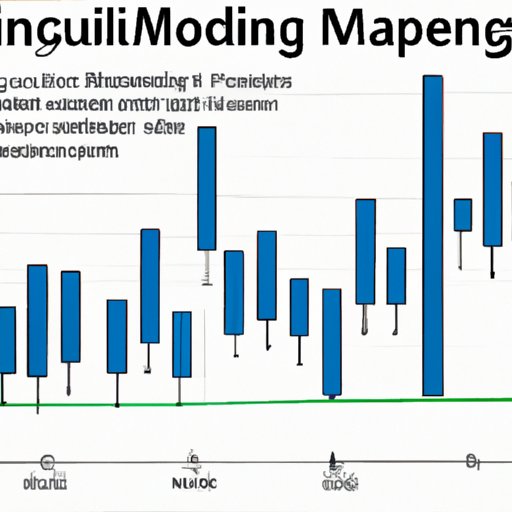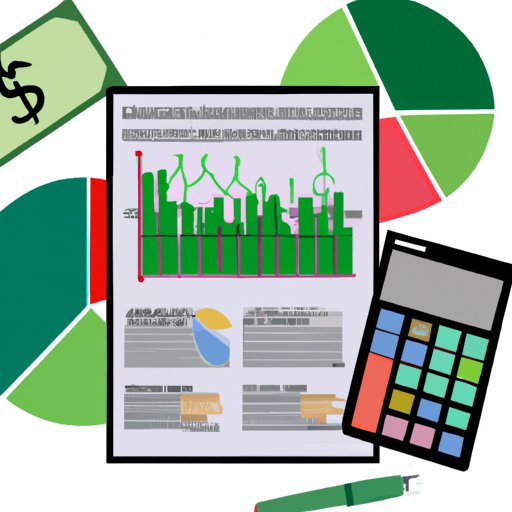Introduction
Financial modeling is a process used to create a numerical representation of a company’s financial performance. It enables businesses to make informed decisions, analyze investments and understand the impact of various scenarios on their finances. In this article, we will explore what financial modeling is used for and provide a comprehensive guide to the process.
A Comprehensive Guide to Financial Modeling
Financial models are used to help businesses make decisions, plan for the future and evaluate the potential outcomes of different scenarios. They can also be used to assess the potential risks and benefits of investments, forecast future financial performance, and help companies meet their long-term goals. Here is a comprehensive guide to the process:
Using Financial Models to Make Business Decisions
Financial models can be used to make informed business decisions. By simulating various scenarios, businesses can determine which decisions will have the most positive impact on their finances. This can help them make decisions such as whether to expand into new markets, launch new products or services, and acquire other companies.
Steps to Create a Financial Model
Creating a financial model typically follows these steps:
- Gathering data and information about the company
- Organizing the data into a logical format
- Building the model using spreadsheet software
- Inputting assumptions and adjusting parameters to simulate different scenarios
- Analyzing the results and interpreting the data
Analyzing Outputs from Financial Models
Once the financial model has been created, it should be tested to ensure that it accurately reflects the company’s current and projected financial performance. After that, the outputs from the model can be analyzed to identify areas of improvement and opportunities for growth. The outputs can also be used to make more informed decisions about the company’s future.
Types of Financial Modeling
There are several different types of financial modeling that can be used to make decisions and analyze investments. Here are a few of the most common types:
What is Financial Statement Modeling?
Financial statement modeling is used to analyze a company’s financial statements and assess its financial health. This type of modeling involves creating a model that links the company’s balance sheet, income statement, and cash flow statement. It can be used to calculate key metrics such as return on equity (ROE) and compare the company’s performance to competitors.
Overview of Valuation Modeling
Valuation modeling is used to estimate the value of a company or asset. This type of modeling involves creating a model that takes into account the company’s financial performance, assets, liabilities, and growth prospects. It can be used to estimate the company’s intrinsic value and compare it to its stock price.
Understanding Risk Modeling
Risk modeling is used to identify and quantify the risks associated with a company or investment. This type of modeling involves creating a model that takes into account factors such as market conditions, economic conditions, and regulatory changes. It can be used to assess the likelihood of certain events occurring and the potential impact on the company’s performance.

Role of Financial Modeling in Business Planning
Financial modeling plays an important role in business planning. It can be used to assess the impact of certain decisions and scenarios on a company’s finances and help companies make better decisions. Here are a few ways that financial modeling can help with business planning:
Utilizing Financial Models to Analyze Business Performance
Financial models can be used to analyze a company’s performance and identify areas of improvement. They can be used to track key metrics such as revenue, expenses, and profits and compare them to industry averages. This can help businesses identify trends and adjust their strategies accordingly.
How Financial Modeling Helps Make Strategic Decisions
Financial models can also be used to make strategic decisions. By simulating different scenarios, businesses can assess the potential impact of their decisions and determine which ones will be most beneficial in the long run. This can help them make more informed decisions about their future.
The Importance of Financial Modeling for Performance Forecasting
Financial models can also be used to forecast future performance. By inputting assumptions and adjusting parameters, businesses can create models that predict how their finances will look in the future. This can help them plan for the future and make better decisions about their investments and operations.

Uses of Financial Modeling in Investment Decisions
Financial modeling can also be used to evaluate investment opportunities and assess the potential risks and rewards. Here are a few ways that financial modeling can help with investment decisions:
How Financial Modeling Can Help Assess Investment Risks
Financial models can be used to assess the potential risks associated with an investment. By creating a model that takes into account factors such as market conditions, economic conditions, and regulatory changes, businesses can identify the potential risks and rewards of an investment and determine if it is worth pursuing.
Using Financial Models to Evaluate Investment Opportunities
Financial models can also be used to evaluate investment opportunities. By creating a model that takes into account the company’s financial performance, assets, liabilities, and growth prospects, businesses can determine whether or not an investment is likely to be profitable.

Impact of Financial Modeling on Financial Forecasting
Financial modeling can also be used to prepare financial forecasts. Here are a few ways that financial modeling can help with forecasting:
Using Financial Modeling to Prepare Financial Forecasts
Financial models can be used to create financial forecasts. By inputting assumptions and adjusting parameters, businesses can create models that predict how their finances will look in the future. This can help them plan for the future and make better decisions about their investments and operations.
Advantages of Using Financial Models for Forecasting
Using financial models for forecasting has several advantages. First, they are more accurate than traditional forecasting methods. Second, they can take into account a wide range of variables and provide a more detailed picture of the company’s future performance. Finally, they can be used to assess the potential risks and rewards of different scenarios and make more informed decisions.
Conclusion
Financial modeling is a powerful tool that can be used to make decisions, analyze investments, and prepare financial forecasts. It can help businesses make more informed decisions, assess the potential risks and rewards of investments, and plan for the future. By understanding the process and the different types of financial modeling, businesses can use this tool to their advantage.
(Note: Is this article not meeting your expectations? Do you have knowledge or insights to share? Unlock new opportunities and expand your reach by joining our authors team. Click Registration to join us and share your expertise with our readers.)
